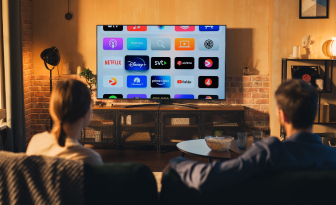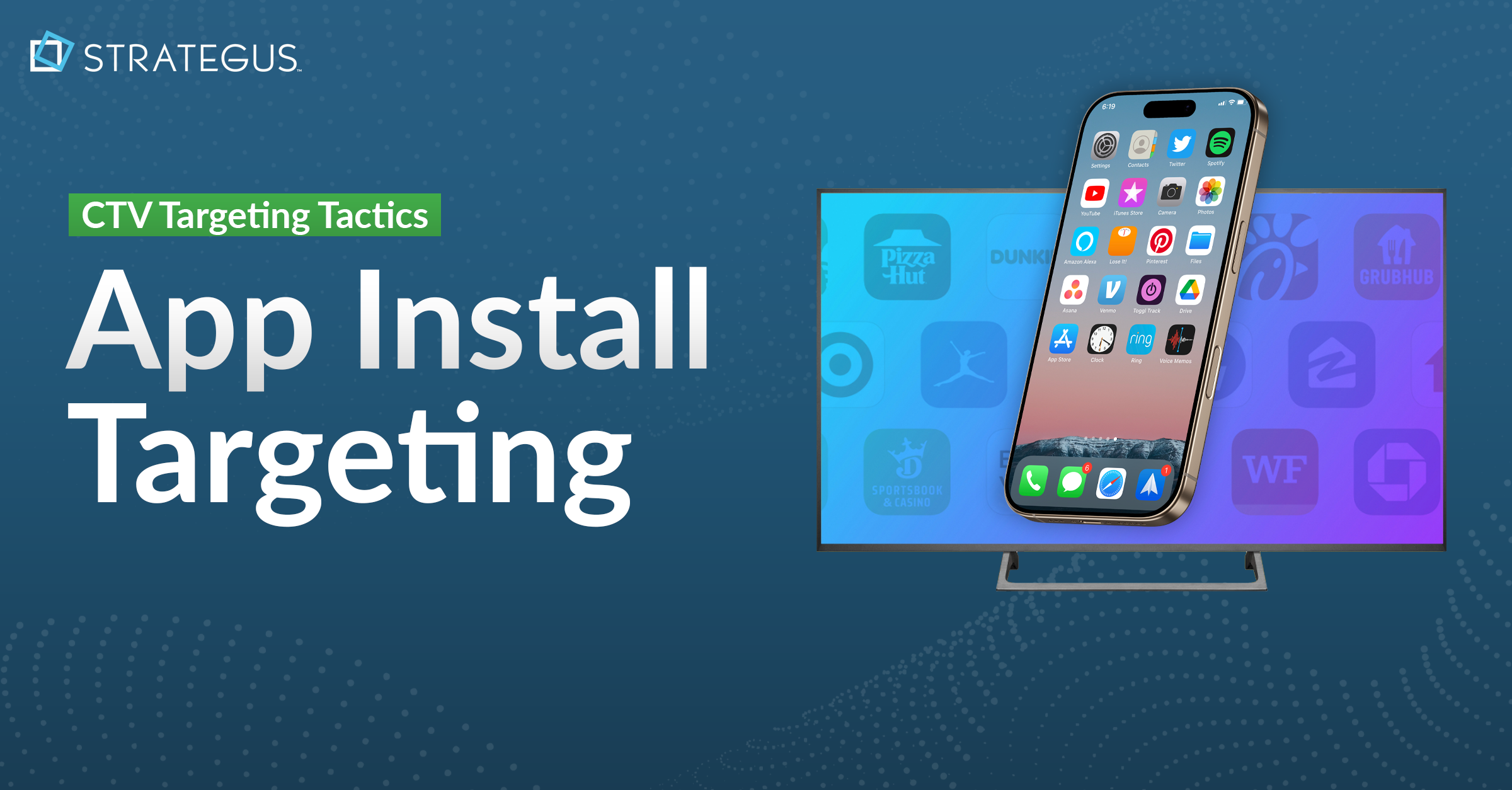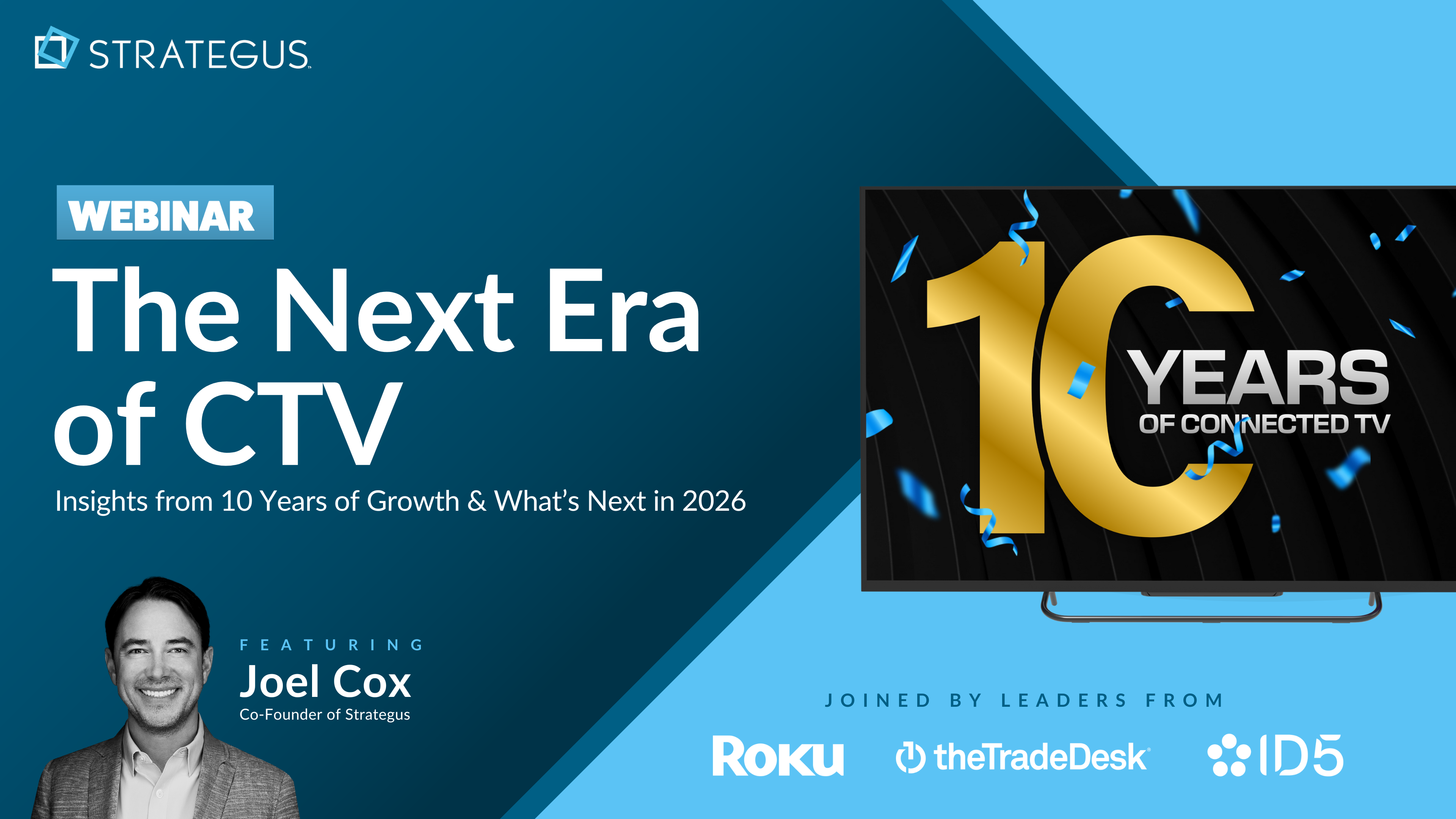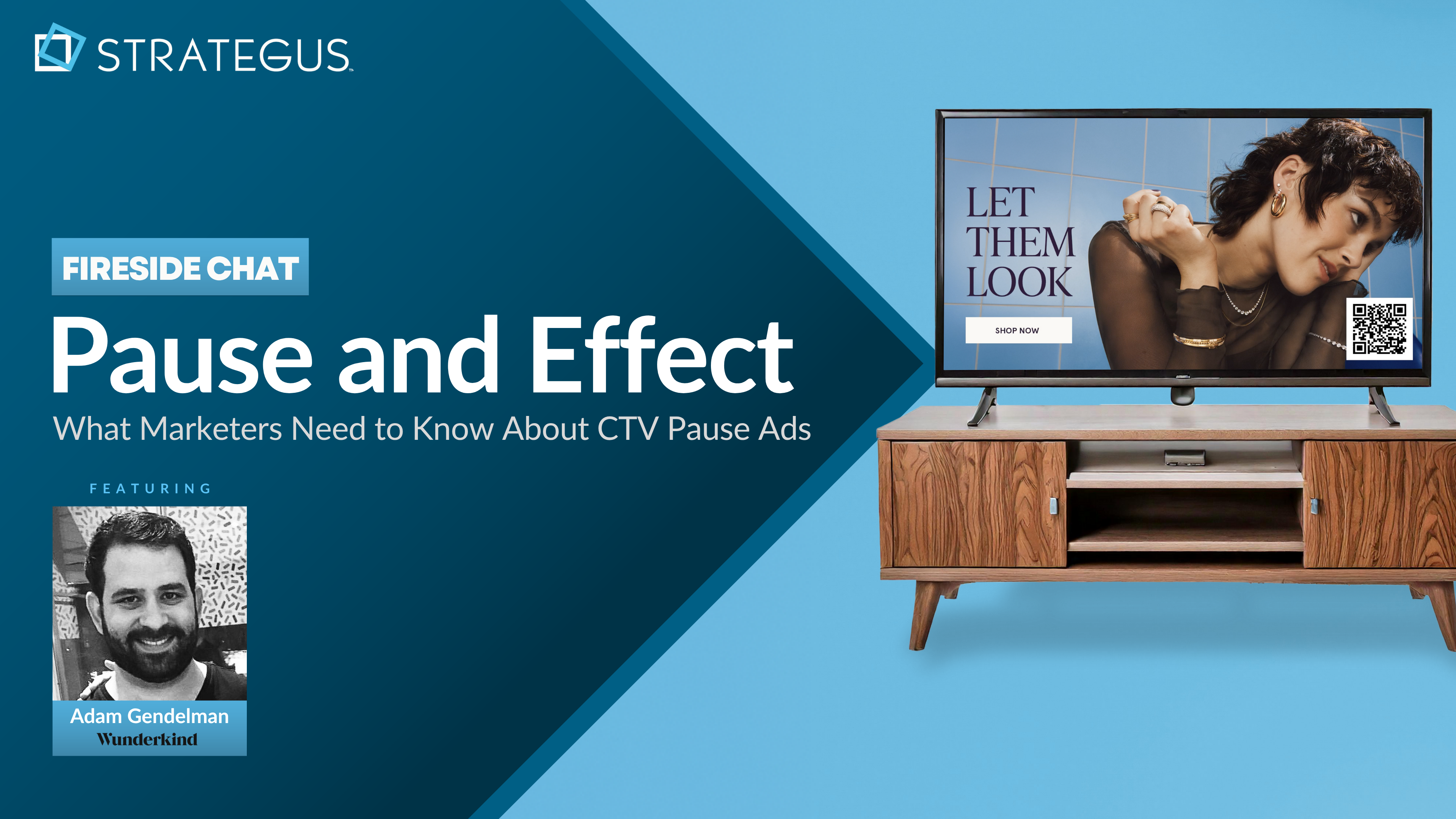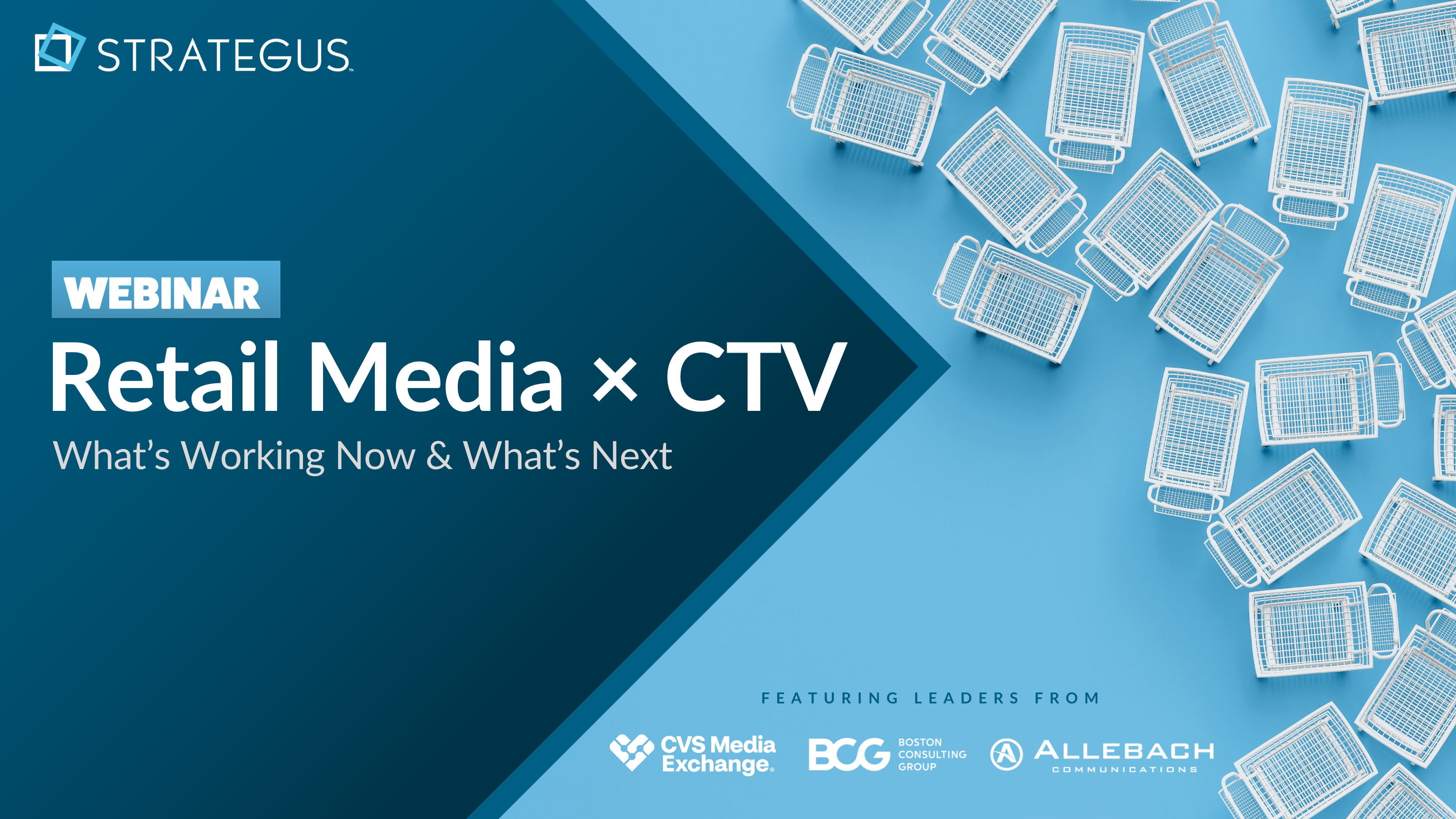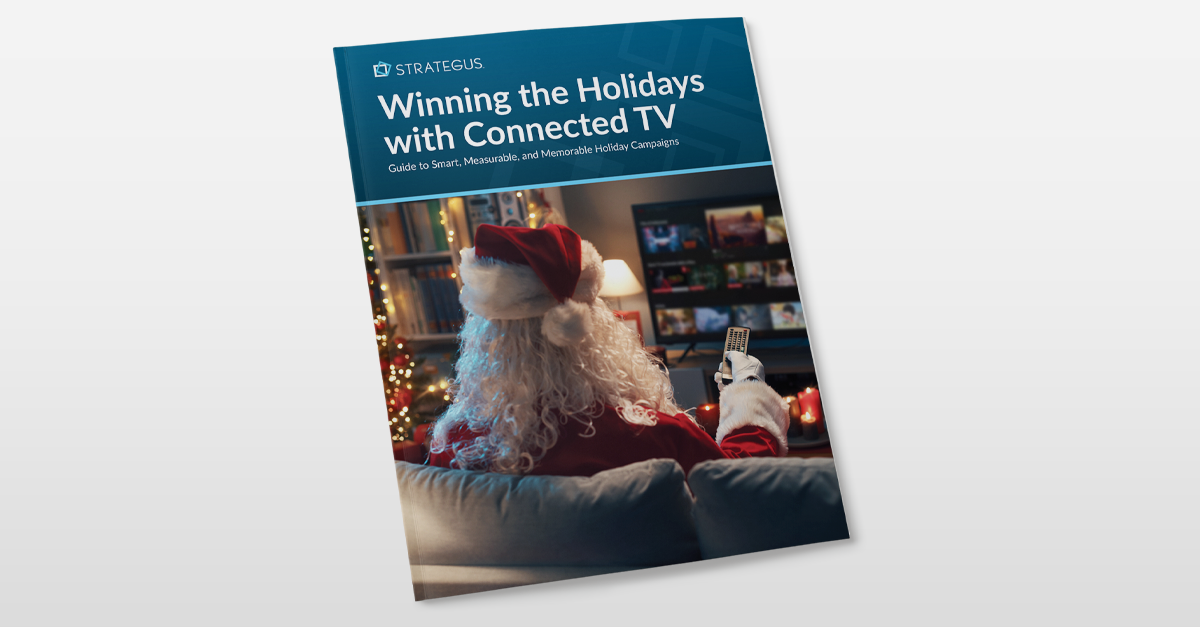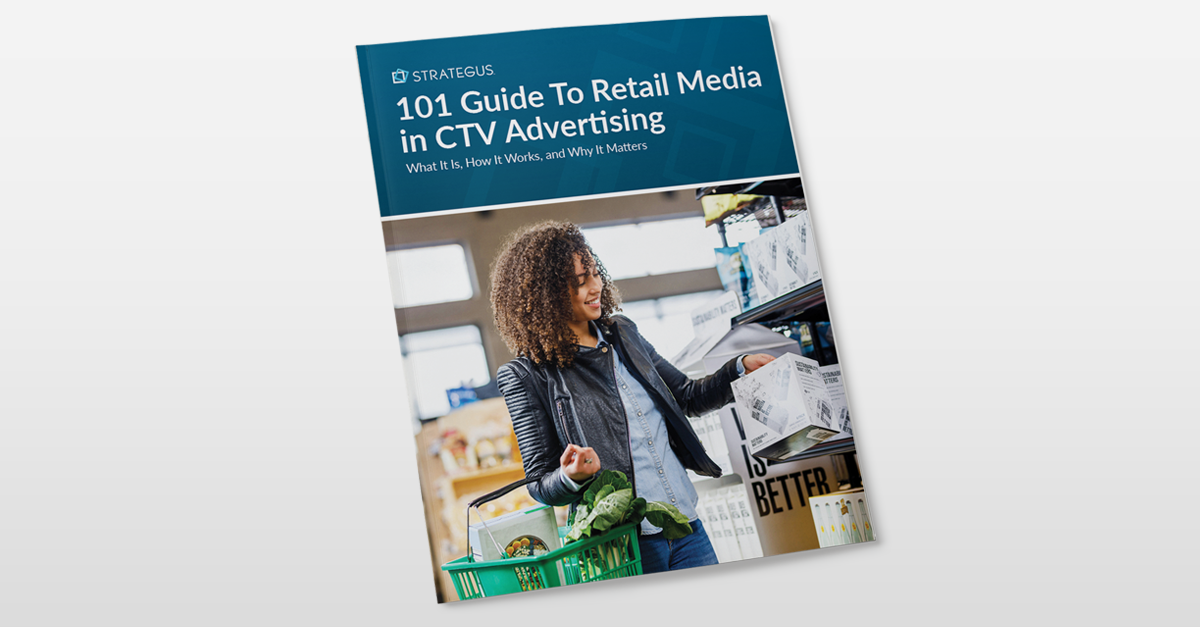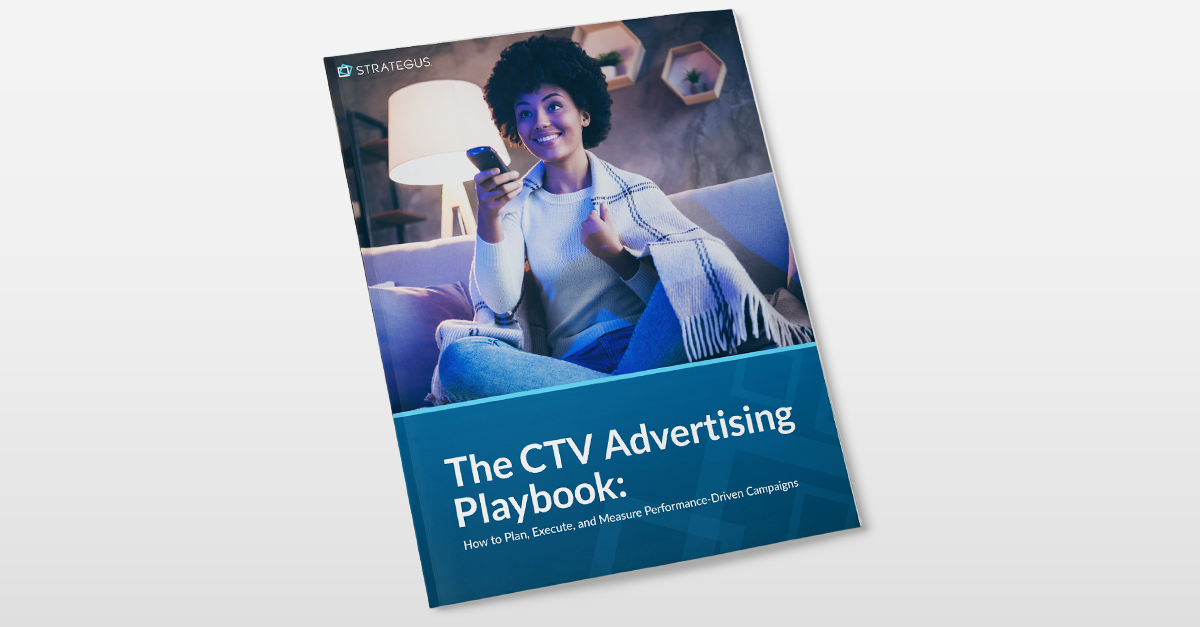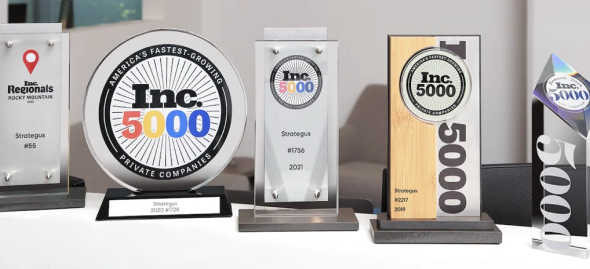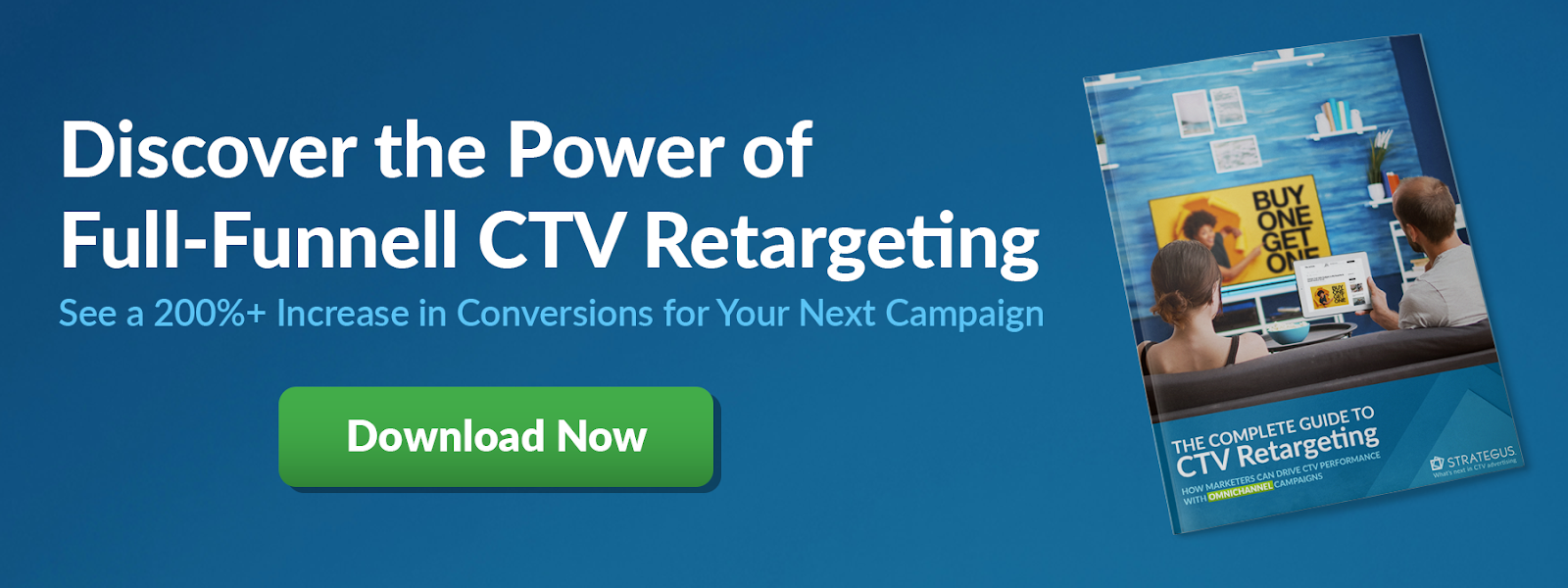- Home
- Strategus Blog
- What's the Future of TV Advertising: 2025 Guide
What's the Future of TV Advertising: 2025 Guide
 Traci Ruether
Traci Ruether
11 minutes read

Think about how many ways people watch TV each day. Many start their mornings with cable news, stream Love Is Blind on Netflix during lunch, and end the night switching between Top Chef on DVR and Fallout on Prime. Children may prefer something like Miss Rachel on YouTube or Paw Patrol on Pluto TV if they’re younger.
TV viewing audiences are split between cable, streaming, and on-demand platforms. The average U.S. household now subscribes to four paid streaming services, while free platforms like YouTube and Tubi capture massive attention. This mix has made TV consumption a juggling act and advertising even more complex.
With countless siloed vendors competing for ad dollars, marketers need a clear path forward. This guide talks about how television advertising is changing, what experts predict for the future, and how to unify linear and connected TV (CTV) strategies to reach modern audiences.
Key Takeaways
- TV audiences now divide their time among cable, streaming, and on-demand platforms, with the average U.S. home subscribing to four paid streaming services.
- Streaming has evolved from a complement to broadcast TV into a dominant force, leading to fragmentation and a need for unified advertising strategies.
- By 2030, traditional and connected TV (CTV) are expected to fully converge, offering viewers flexibility and advertisers seamless cross-platform opportunities.
- Advertisers must target viewers, not just programs, using programmatic CTV to personalize messages and optimize cross-channel frequency management.
- Cross-device retargeting and transparent, multi-touch attribution allow marketers to link ad exposure to real outcomes like website visits and in-store traffic.
- Partner with Strategus to unify linear and connected TV campaigns, use transparent analytics, and reach modern audiences effectively.
The Various Eras of TV and Advertising
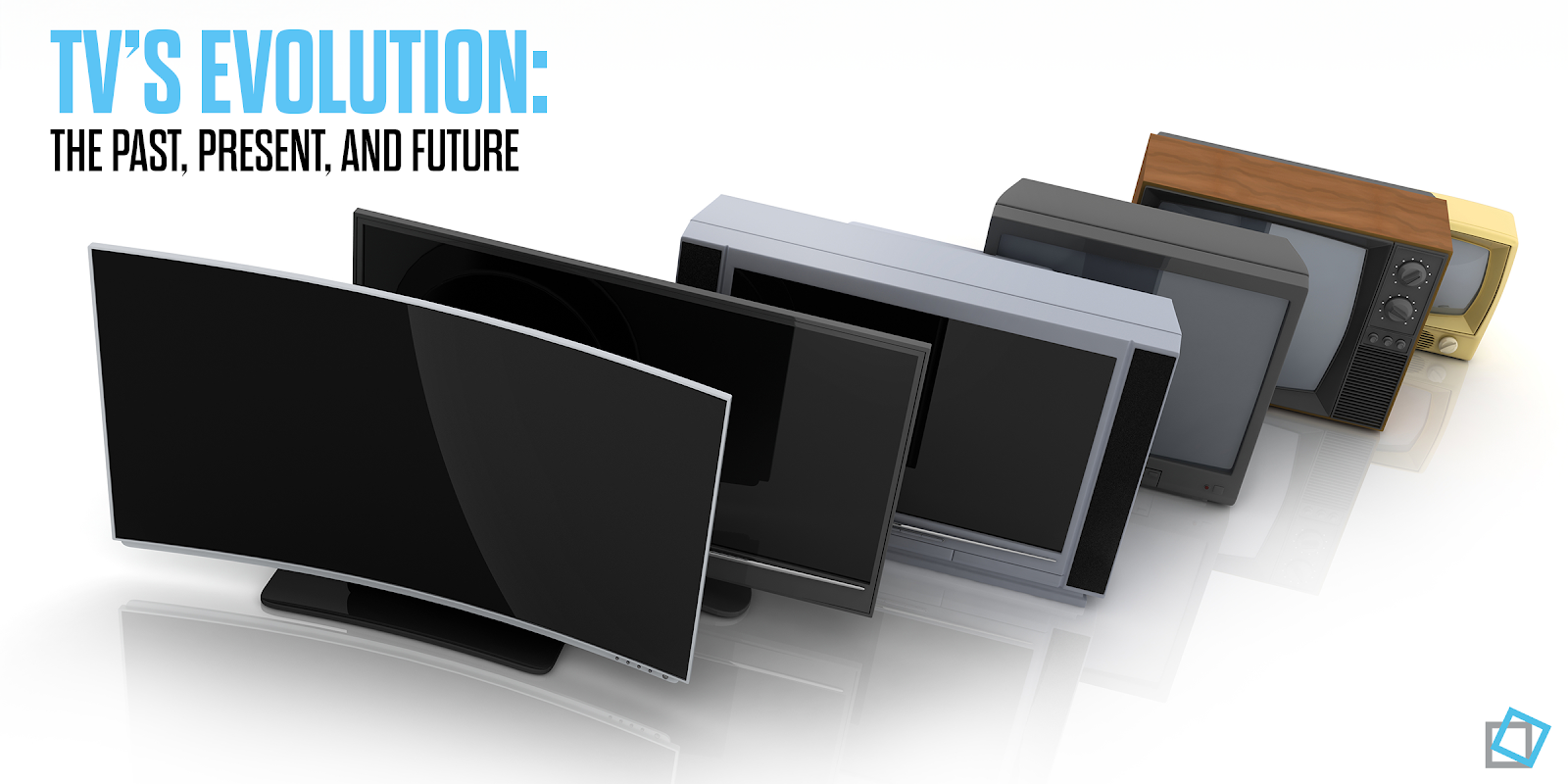
The digitalization of TV is nothing new. Most of us upgraded to Smart TVs several years ago and have been watching a mix of traditional broadcasts and streaming for some time. But the impact on advertisers wasn’t as immediate.
Why? Subscription video on demand (SVOD) was the primary model when Netflix first launched, meaning ad dollars were still relegated to linear TV. Prime-time events like live sports also took a while to move to streaming, which slowed cord-cutting.
So where are we currently, and what comes next? Here’s a look at the various phases TV has passed through.
2005–2013: Streaming Compliments Traditional Broadcast TV
In the early days of streaming, services like Netflix didn’t directly compete with legacy media companies. In fact, prior to COVID, most legacy media companies happily licensed their content to Netflix.
Was there disruption? Of course. But consumers saw these streaming services as a way to watch ad-free content on their own time.
The promise of subscription-based streaming services was simple: They provided viewers with access to a library of exclusive shows and movies that could be watched anywhere and anytime. Only Hulu included ads at this early stage of the game, and linear streaming channels weren’t even a thing until virtual multichannel video programming distributors (vMVPDs) like Sling TV entered the picture.
As such, most consumers held on to their cable packages as a way to watch local news and live sports broadcasts. The desire to lean back for scheduled programming or surf between channels also remained strong, which is why legacy TV maintained its unique appeal.
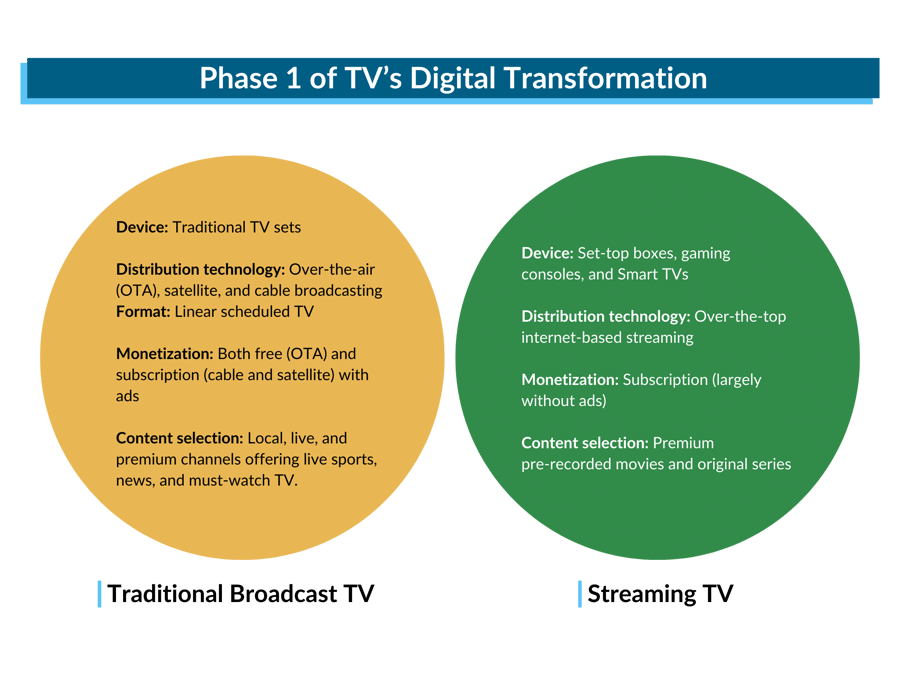
2013–2030: Streaming Services Mature, Introducing Fragmentation and Overlap
A new era began in 2013 when Netflix started releasing original scripted content. Shows like House of Cards and Orange Is the New Black set off an arms race.
‘Streaming’ suddenly transformed from a convenient way to watch reruns to an exclusive means for accessing the most-talked-about new series. As such, Amazon Prime, Apple TV+, Disney+, and more had a new target in their minds: luring in new subscribers with must-watch originals.
From there, the distinction between legacy TV and streaming began to disappear and brought us to where we are today.
The format, content selection, and devices used to watch TV content are now identical across both categories. More specifically:
- 90% of homes have an internet-connected TV, which can be used to view both over-the-air and over-the-top content.
- Services like YouTube TV and Tubi offer a blend of linear programming and on-demand content.
- Several streaming services hold exclusive rights to major sporting events today, prompting viewers once slow to make the move to cut the cord in earnest.
Eyevinn Technology’s Magnus Svensson explains:
“As streaming starts to look more like TV, it shows they're learning from each other. The future of watching shows and movies is probably going to be a mix of the old and the new, taking the reliable parts of TV and mixing them with the cool new things streaming can do. This way, viewers get more of what they want, how they want it, in a modern way.”
Basically, viewers today are hybrid, tuning into a mix of broadcast and streaming platforms. This requires advertisers to take a similarly hybrid approach. And yet, most are dragging their feet.
"There remains a significant gap between viewership and ad dollars on TV streaming. In 2023, U.S. adults aged 18-49 spent more than 60% of their TV time on streaming, while advertisers spent just 29% of their TV budgets on streaming."
Adapting to this reality won’t just make advertisers more successful today, it will also prepare them for what’s to come.
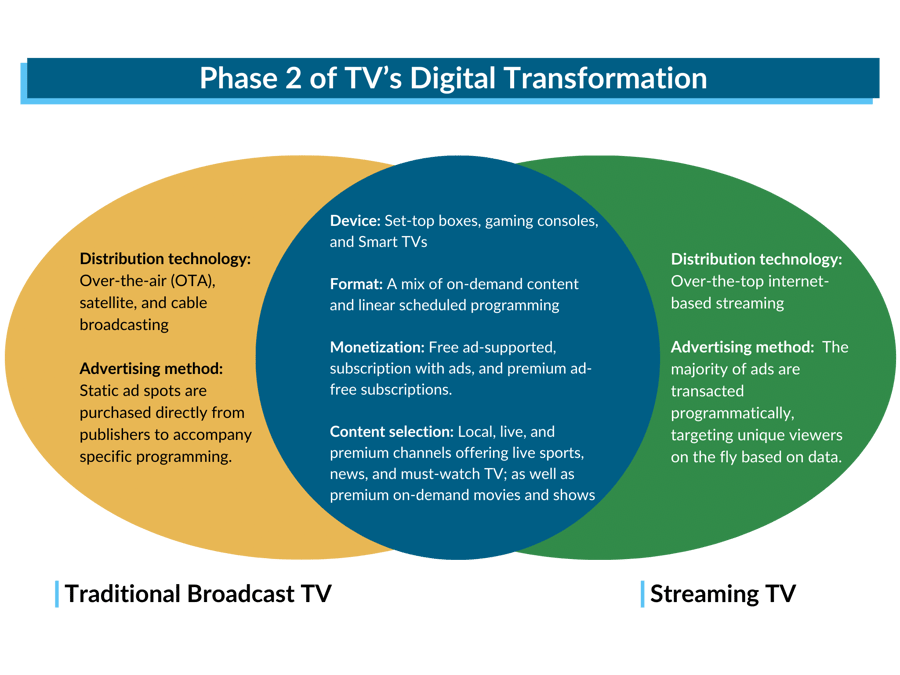
2030 and Beyond: The Total Convergence of Traditional and Streaming TV
Traditional broadcasting and streaming will keep converging. Eventually, CTV will combine the best of the streaming and legacy broadcast models, giving viewers flexibility without complexity.
Bill Condon, the VP of Global Distribution at Xumo elaborates:
“What we’re doing right now is a dress rehearsal for when we move everything to IP delivery. I don’t have a crystal ball to tell you when that will happen, but it’s something we should all strive for.”
And if this transformation is done right, the fragmentation that’s frustrated viewers and advertisers for so long should fade into the background.
The result? A more cohesive experience for both parties, a better user experience for viewers, and higher performing campaigns for marketers. But reaching this ideal future state requires collaboration across the industry. Strategus President Todd Porch explains:
“Technology has never moved as fast as it is today in the media space. And it will never move this slowly ever again.
There’s convergence, the marketplace is a bit fractured, and from a leadership standpoint, the onus is on those of us in the industry to drive simplicity and smooth over the fractures.”
So where do the fractures exist and how can advertisers adapt their strategy to account for the current state of television while preparing for the future?
It all starts with prioritizing several key capabilities.
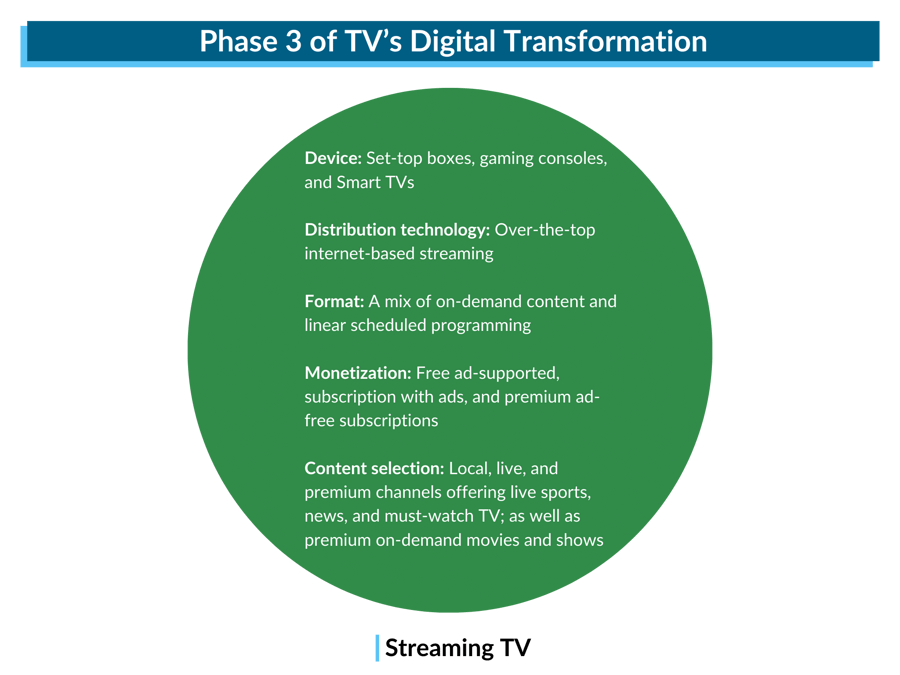
How to Reach Viewers in a Fragmented Media World
To set your brand up for success in the near future, advertisers need to understand the present. Focus on the viewers themselves, not just the networks or apps where ads appear. Use tools that help you control the viewer experience, run campaigns across multiple channels, and connect online and offline performance.
1. Buy Media Based on Viewers, Not Content
Old-school TV buying focused on specific shows or networks, which meant broad and generic ads. Programmatic connected TV (CTV) changes that by targeting the right viewers instead of the programs they watch.
You can now personalize your message based on who the viewer is and where they are in their journey. To get the full benefits of programmatic CTV, work with partners who give you access to many publishers and data sources.
Choose a vendor-agnostic platform that connects with a wide network of data and inventory partners. This flexibility lets you build customized campaigns that adapt to your goals and deliver stronger results.
2. Manage Ad Frequency Across Linear and CTV
Frequency is important and showing the same ad to the same user multiple times can lead to something called ad fatigue. We’re all ad-fatigued to some extent but when that fatigue is associated with a single brand, it can lead to that part of the audience developing negative feelings towards your brand.
Use CTV platforms with advanced targeting tools to avoid showing the same ad too many times across channels. Smart frequency control helps you reach the right viewers, at the right moment, without overwhelming them. This keeps your message fresh and your audience engaged.
3. Retarget Viewers Across All Digital Channels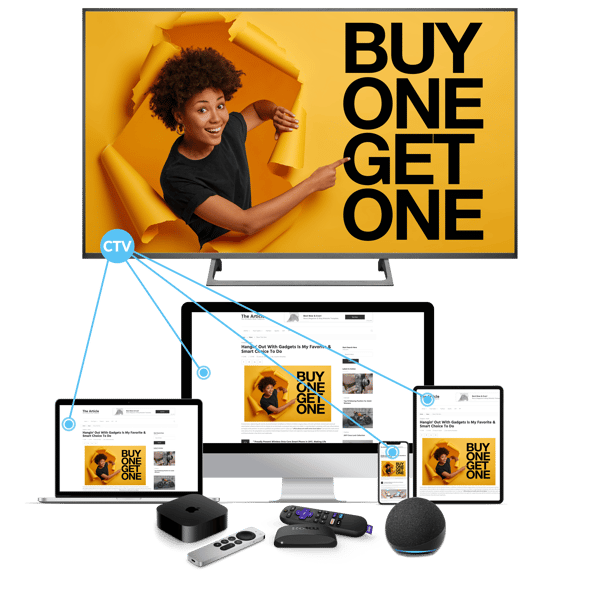
Viewers don’t stick to one screen, and your ads shouldn’t either. People move between TV, mobile, and desktop, so your strategy needs to stay connected across every channel. The goal is to create one seamless brand experience wherever your audience watches.
With CTV retargeting, you can re-engage people who’ve already seen your ad on connected TV. At Strategus, we build cross-device campaigns that follow these viewers with online video, display, or streaming audio ads.
This approach helps you stay top of mind, deliver the right message at each step, and boost conversions.
4. Track Results Across Every Channel
Measuring traditional TV ads has always been tough, but connected TV changes that. You can now see how viewers respond after seeing your ad and connect TV exposure to real actions.
With CTV, you can track what happens next, from website visits to in-store traffic. This helps you understand performance, prove ROI, and plan smarter campaigns.
Use advanced multi-touch attribution to link your ads to real results like:
- Foot traffic
- Website visits after viewing
- Online purchases
- Search and social engagement
This full-picture view helps you see what’s working and optimize every campaign.
5. Measure Everything and Demand Transparency
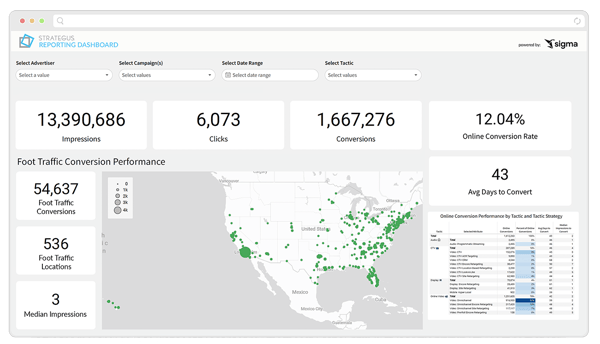
To succeed in advertising, whether TV or otherwise, you need clear and complete reporting. Look for a CTV provider that offers 24/7 access to performance data through a single dashboard. This makes it easier to see what’s working and where your ads appear.
Transparency from publishers ensures your ads reach the right audience in the right context. When you can see real data instead of guesses, you can refine targeting, improve results, and grow your return on ad spend.
At Strategus, we believe transparency drives better advertising. When you can see real data, you can make smarter decisions and grow faster. Our reporting dashboard gives you clear insights into every part of your campaign, from impressions and video completion rates to conversions and attribution.
Closing Thoughts — Partner with Strategus to Shape the Future of TV Advertising
The future of TV belongs to advertisers who connect with viewers on their terms, across every screen, platform, and channel. Strategus makes that possible.
We help brands and agencies cut through the noise of fragmented media with precise, data-driven CTV campaigns built around real viewer behavior. Our ecosystem brings together:
- A vast network of ad exchanges, DSPs, SSPs, and premium publishers
- Advanced audience targeting and frequency management tools
- Cross-device retargeting that turns attention into action
- Transparent reporting dashboards that show real results in real time
Your advertising strategy has to be flexible to really hit home with potential customers. Speak to a Strategus expert today to learn more about how we can help.
Frequently Asked Questions
How Can Traditional TV Remain Relevant Today?
Traditional TV stays relevant when marketers buy audiences, not just shows. Use data to target households on live sports, news, and local programming. Sync with CTV to manage frequency and extend reach. Tie TV exposure to web visits and store traffic. Treat linear as a high-impact layer in a cross-screen plan.
How Is the Rise of Streaming Impacting the Future of TV Advertising?
Streaming shifts budgets toward audience-based buying and real-time optimization. Marketers get precise targeting, flexible frequency control, and clear attribution. Creative now fits many screens and contexts. Brands combine live events with on-demand viewing to keep attention. Teams build cross-channel funnels that retarget viewers and connect exposure to sales.
What Does the Future Hold for Programmatic TV Buying?
Programmatic TV moves toward unified identity, cleaner supply, and outcome-based bidding. Buyers will set goals like site visits or store lifts and optimize in real time. Deals will blend guaranteed placements with flexible reach. Transparent reporting and cross-device retargeting will become standard, making TV behave like digital performance media.
What Is Convergent TV?
Convergent TV brings linear and streaming into one plan, one audience strategy, and one report. You target households across cable, satellite, vMVPDs, AVOD, and FAST with shared frequency controls. You track outcomes like site visits and foot traffic. This approach removes silos and improves reach, relevance, and ROI.
Is Digital Media Killing TV Advertising?
Digital does not kill TV. It reshapes it. TV keeps its impact, while digital adds precision and speed. Smart marketers use both. They run CTV to find the right homes, add linear for scale moments, and retarget on other screens. This mix improves attention, recall, and results.
Is TV Still a Game Changer if Many People Skip Ads Now?
TV still changes the game because premium content holds attention on the biggest screen. Many environments limit skipping or use non-skippable pods. Strong creative, clear offers, and tight frequency increase completion. Brands reinforce TV exposure with cross-device follow-ups, which drives searches, visits, and sales after the first view.
What Types of TV Advertising Packages Are Available?
You can buy upfront guarantees, private marketplace deals, and open programmatic access. Upfronts secure marquee events. PMPs offer premium context with control. Open programmatic adds scale and testing speed. Many brands mix all three, then manage frequency across them and shift budget toward placements that deliver measurable outcomes.
What Is the Primary Benefit of Using Overlap Reports for Your Streaming TV Ad Campaign?
Overlap reports show how much your audiences and placements duplicate across platforms. You find waste from repeat exposure and fix it with caps or exclusions. You also spot unique reach that deserves more budget. This view improves efficiency, raises incremental reach, and strengthens results across your whole plan.

Traci Ruether is a content marketing consultant specializing in video tech. With over a decade of experience leading content strategy, she takes a metrics-driven approach to storytelling that drives traffic to her clients' websites. Follow her on LinkedIn at linkedin.com/in/traci-ruether or learn more at traciruether.com.
Strategus is a managed services connected TV(CTV) advertising agency with over 60,000+ campaigns delivered. Find out how our experts can extend your team and drive the result that matter most.
Talk to an Expert
Table of Contents
-
TV’s Evolution: The Past, Present, and Future
-
2005–2013: Streaming Compliments Traditional Broadcast TV
-
2013–2030: Streaming Services Mature, Introducing Fragmentation and Overlap
- 2030 and Beyond:The Total Convergence of Traditional and Streaming TV
- Capabilities for Advertisers Navigating Today’s Fragmented Landscape
Seeking a Custom CTV Strategy That Delivers?
What to read next
App Event Tracking: Tie Mobile App Activity to CTV Campaigns
Let’s say you’re running a CTV campaign for a personal finance app.
5 minutes read

Stop Guessing Who Your Audience Is — Let Their Apps Tell You
Connected TV (CTV) targeting often falls in one of two camps.
8 minutes read
See Who Bought After Your Ad + How Much They Spent
You can’t improve what you can’t measure. And for years, that’s been a major problem with TV advertising.
4 minutes read

First-Party Attribution: Match Ads to Sales With CRM Data
The value of first-party data continues to grow.
7 minutes read

